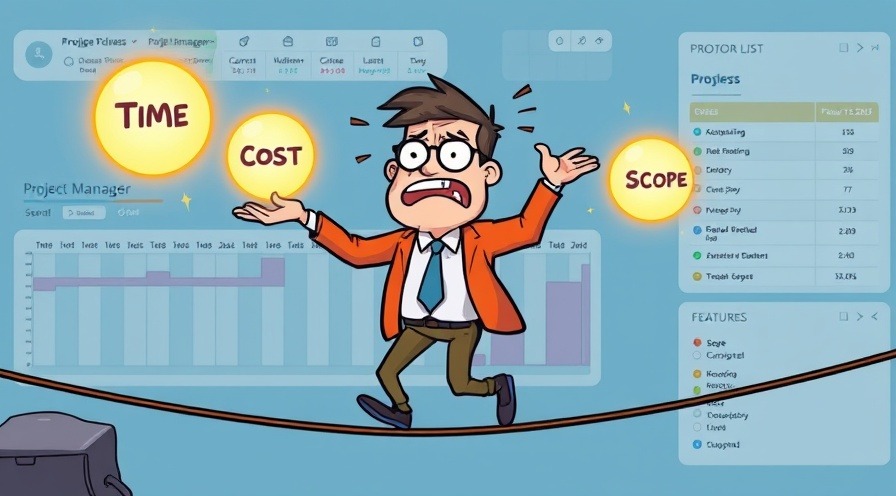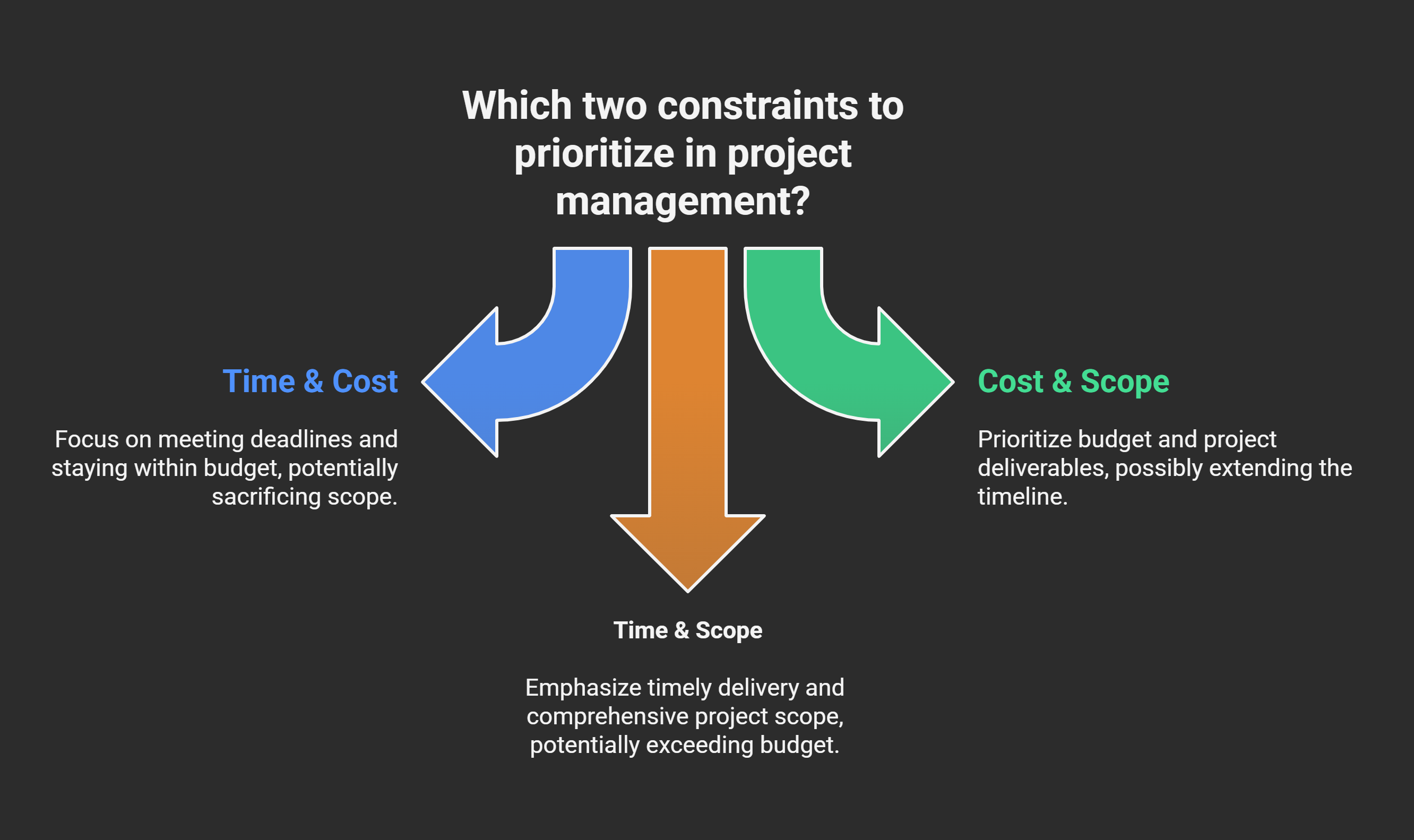
Time, Cost, and Scope: Why You Can Only Pick Two (But Still Have to Deliver All Three) ⛓️
Project Constraints: The Holy (Un)Trinity You’ll Never Escape
#IronTriangle #ProjectConstraints #TimeCostScope #CompTIAProjectPlus #PK0005 #ProjectManagementLife #ProjectPlanningTips
TL;DR – Pick Two, Regret Everything
Projects are limited by three constraints: time, cost, and scope.
Changing one affects the others. You can't "win"—you just manage the chaos.
Understanding the Iron Triangle is essential for the CompTIA Project+ exam.
Real PMs know it's about trade-offs and prioritizing the least painful sacrifice.
⚖️ The Iron Triangle: Project Management’s Worst Love Triangle
Think of time, cost, and scope as three clingy exes in a group chat—you try to please one, and the other two lose their minds.
The Iron Triangle (a.k.a. the Triple Constraint) is foundational in project management. It represents the three key forces that must stay in balance… or else.
The Trio of Doom:
⏰ Time: The deadline. When the thing is due.
💸 Cost: The budget. How much you can spend.
📦 Scope: The work. What’s being delivered.
What’s the Catch?
You can only optimize two—and the third one suffers.
Like:
Want it fast and cheap? Say goodbye to quality or features.
Want it good and fast? Open that wallet wide.
Want it cheap and good? Better be very patient.
🤔 Why This Triangle Isn’t Fair (But You Still Have to Play)
The triangle isn’t optional. It’s not a theory. It’s a brutal game of trade-offs, and your job is to keep all three from crashing the party at once.
🎯 On the Exam (PK0-005):
Expect questions like:
“A stakeholder adds new features without changing the schedule or budget. What’s impacted?”
✔️ Answer: Scope expands → project likely exceeds time or cost.

💡 Managing the Triangle Without Losing Your Mind
Here’s how real PMs pull it off:
1. Define the “Fixed” Constraint Early
Not all constraints are created equal. Ask your client or sponsor:
“What’s most important—time, budget, or deliverables?”
Example:
🚀 A product launch date is non-negotiable = Time is fixed
💰 A small business with tight funds = Cost is fixed
🎁 A detailed feature set = Scope is fixed
Once you know which side of the triangle is set in concrete, you can flex the other two accordingly.
2. Use a Change Management Process
When a constraint shifts (and it will), document it, analyze the impact, and get formal approval before adjusting.
🧰 Tool: Change Request Forms, Impact Assessment
3. Communicate the Domino Effect
If scope increases, tell the stakeholders:
“We can do it, but it’ll push the deadline or cost more.”
Translation: You can have more—just not for free.
4. Track and Report Like a Pro
Keep an eye on your triple threat using tools like Gantt charts, burn-down charts, and budget tracking.
🧰 Tool: Microsoft Project, Monday.com, spreadsheets (for the old-school warriors)
5. Don’t Promise a Unicorn
Be realistic in your planning. If someone wants all three maxed out—fast, cheap, and flawless—let them know unicorns aren’t in the budget.
🔍 Iron Triangle in the Real World
Scenario |
Constraint Fixed |
What Gives |
|---|---|---|
Marketing campaign launch date |
Time |
You reduce features or increase budget |
Client has a fixed budget |
Cost |
You delay delivery or cut scope |
Stakeholder wants all features |
Scope |
You increase time or cost (or both) |
🤖 Project+ Exam Tip
Watch out for scenario questions where constraints are in conflict. The correct answer usually involves trade-offs or risk mitigation.
🔚 Final Thought: Embrace the Juggle
You’re not breaking the triangle—you’re balancing it on a moving train while answering stakeholder emails. The trick isn’t perfection; it’s negotiation. Project+ wants to know you understand the math, the trade-offs, and the diplomacy.
🔜 Next in the Series:
🎬 “How to Manage Project Risks Without Having a Mental Breakdown”
Because every phase—from Initiation to Closure—has cliffhangers, plot twists, and questionable characters.
Hope this was a good read! Feel free to bookmark our blog for the next time you need some inspiration. Have a friend who'd appreciate this? Pass it along!
 Add Row
Add Row  Add
Add 




Write A Comment